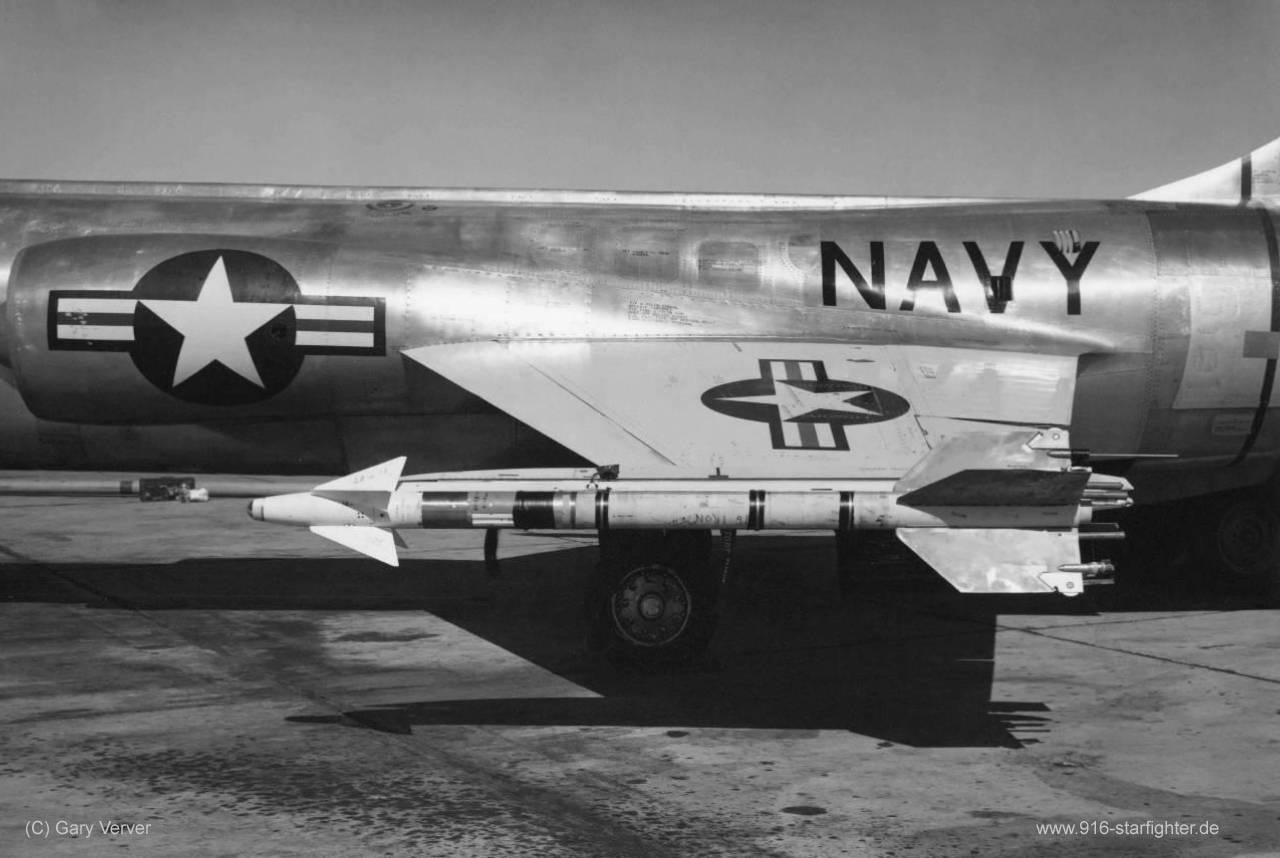
F-104A "740" USN at NAF China Lake 1960 Raytheon (Philco/General Electric) AAM-N-7/GAR-8/AIM-9 Sidewinder The AIM-9 Sidewinder is the world's most successful short-range air-to-air missile, and will remain the U.S. military's main "dogfight" AAM for the foreseeable future. Development of Sidewinder began in 1950 at the NOTS (Naval Ordnance Test Station) - later renamed as NWC (Naval Weapons Center) - at China Lake. The idea was to create a very simple heat-seeking air-to-air missile by equipping a 12.7 cm (5 in) air-to-air rocket with a lead sulphide (PbS) photo cell in a hemispherical glass nose to detect IR radiation. Another simple, yet effective, idea was the use of "Rollerons" (slipstream-driven wheels at the fin trailing edges acting as stabilizing gyros) as roll-stabilizing devices. The first test missiles were fired in 1951, and on 11 September 1953, the first air-to-air hit on a drone was scored. In the same year, the prototype missile received the official designation XAAM-N-7. General Electric began low-rate production in 1955, and in May 1956, the AAM-N-7 Sidewinder I entered U.S. Navy service. Only 240 Sidewinder I missiles were built, and full-rate production missiles (built by Ford Aerospace (Philco) and General Electric) were known as AAM-N-7 Sidewinder IA. The AIM-9A/B used a 4.5 kg (10 lb) blast-fragmentation warhead. This was triggered by an IR proximity or contact fuze, and had an effective kill radius of about 9 m (30 ft). The uncooled PbS seeker of these early missiles had a 4° angle of view and a tracking rate of 11°/s, and the missile itself could turn at 12G. Propulsion was provided by a Thiokol MK 17 solid-fuel rocket motor (17.8 kN (4000 lb) thrust for 2.2 s), which could propel the missile to a speed of Mach 1.7 above launch speed. Because of the limitations of the seeker, the AIM-9A/B could only be used for tail-on engagements of non-maneuvering (!) targets at ranges between 900 m (3000 ft) and 4.8 km (2.6 nm). The missile was also very susceptible to other heat sources (sun, ground reflections). Because of the usual inter-service rivalry, the USAF did not adopt the Sidewinder, until a "fly-off" against the USAF's GAR-2/AIM-4B Falcon in June 1955 showed the superiority of the Sidewinder The USAF subsequently procured the AIM-9B under the designation GAR-8. More than 80000 AIM-9B missiles were produced until 1962. On 24 September 1958, the Sidewinder achieved the world's first successful use of air-to-air guided missiles, when Taiwanese F-86Fs shot down Communist Chinese MiG-15s using AIM-9Bs supplied by the US Navy. copyright © Gary Verver

